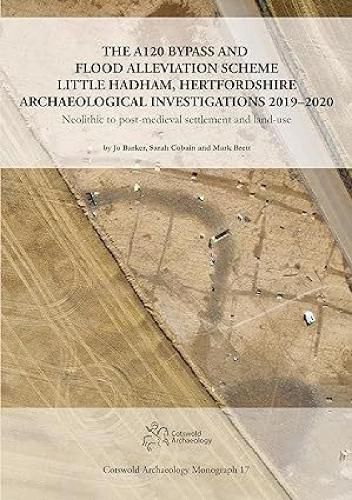Readings Newsletter
Become a Readings Member to make your shopping experience even easier.
Sign in or sign up for free!
You’re not far away from qualifying for FREE standard shipping within Australia
You’ve qualified for FREE standard shipping within Australia
The cart is loading…






A few scatters of Mesolithic and Neolithic flint were found across the development area. Slightly more extensive evidence for Neolithic occupation was represented by a small number of pits from which flint-tempered Neolithic pottery, worked flint, charred plant remains and animal bone were recovered. During the later Bronze Age and Iron Age the first permanent settlements were established. They were characterized by post-built circular structures, pits and cremation burials. Settlement began in the river valley and the western edge of the clay plateau but during the Iron Age settlement shifted onto the clay plateau with eh creation of a five-sided enclosure. By the Late Iron Age and Roman period a farmstead and managed fields were established. This farmstead has been defined as a complex-type farmstead and seems to have been involved in the large-scale production of spelt. Limited evidence was identified for Saxon activity but a few features, including the remains of a tree-lined avenue, may have been associated with the 17th century Hadham and Wickham Halls which were owned by the Capel family. This volume describes the archaeological remains as well as the artefacts and ecofactual material recovered from the excavations.
$9.00 standard shipping within Australia
FREE standard shipping within Australia for orders over $100.00
Express & International shipping calculated at checkout
A few scatters of Mesolithic and Neolithic flint were found across the development area. Slightly more extensive evidence for Neolithic occupation was represented by a small number of pits from which flint-tempered Neolithic pottery, worked flint, charred plant remains and animal bone were recovered. During the later Bronze Age and Iron Age the first permanent settlements were established. They were characterized by post-built circular structures, pits and cremation burials. Settlement began in the river valley and the western edge of the clay plateau but during the Iron Age settlement shifted onto the clay plateau with eh creation of a five-sided enclosure. By the Late Iron Age and Roman period a farmstead and managed fields were established. This farmstead has been defined as a complex-type farmstead and seems to have been involved in the large-scale production of spelt. Limited evidence was identified for Saxon activity but a few features, including the remains of a tree-lined avenue, may have been associated with the 17th century Hadham and Wickham Halls which were owned by the Capel family. This volume describes the archaeological remains as well as the artefacts and ecofactual material recovered from the excavations.